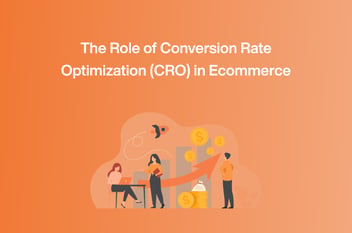In the intricate realm of web design, fashioning an ecommerce website demands a nuanced approach distinct from other web formats. The stakes are higher, as a misstep can wreak havoc on site conversions, potentially translating into substantial financial losses. Conversely, success in this domain promises not just accolades but also the ability to command higher service fees. In this blog, we discuss the blueprint for the perfect ecommerce website layout, with a focal point on the pivotal product page.
A cornerstone of effective ecommerce design is to draw inspiration from the paragon of success in this arena—Amazon. The ecommerce giant's product page serves as a paradigm, attuned to user behavior and meticulously crafted to maximize the impact of content visible above the fold. Amazon understands that the initial content a user encounters significantly influences their decision to delve further or exit the site. This underscores the criticality of what is presented in the viewport.
At the forefront of this design strategy is the implementation of breadcrumb navigation. Beyond serving as a navigational aid, breadcrumbs provide users with a sense of orientation within the site's expansive landscape. Given the fluid nature of user journeys in ecommerce, breadcrumb links become indispensable, mitigating the risk of confusion and frustration.
The visual elements above the fold are orchestrated with precision. A compelling product image takes center stage, supplemented by additional images that users can seamlessly flip through. Amazon's adept use of multiple images and videos exemplifies a strategy that allows users to comprehensively evaluate a product in a brief span. Accompanying the visuals are essential product details—a concise yet informative title, a punchy description, and strategically placed badges that bolster social proof.
Reviews occupy a prominent position, recognized as a pivotal factor in purchase decisions. The integration of reviews, discreetly linked for user convenience, provides a testimonial-driven layer to the product page. The strategic placement of pricing details, accentuated with visible sales and discounts, follows a pattern observed in Amazon's successful formula. The deliberate use of different colors or formatting draws attention to discounts, influencing potential buyers positively.
The call to action, often manifested as the "Add to Cart" or "Buy Now" button, is a focal point that should not be underestimated. Amazon's choice of specific colors and distinctiveness in button design guides users seamlessly towards the desired action. The efficacy of these design choices is evident in the user's intuitive focus on these elements amidst the plethora of information.
Transitioning to the mobile layout, a judicious selection of elements to display above the fold becomes paramount. Recognizing the mobile user's inclination to scroll, the focus remains on essentials: product name, breadcrumbs, reviews, images, and price. Noteworthy is the suggestion to streamline image display using dots or buttons, conserving space while maintaining intuitiveness.
In the mobile context, user reluctance to engage with extensive blocks of text necessitates a strategic placement of product descriptions further down the page. The hierarchical organization of information facilitates a smooth flow, ensuring that users can access critical details without feeling overwhelmed.
In conclusion, the art of crafting the ideal ecommerce website layout is an amalgamation of strategic design, user-centricity, and a keen understanding of successful precedents. By heeding the lessons from industry leaders like Amazon, designers can navigate the complexities of ecommerce, creating not just visually appealing but also highly functional and conversion-friendly online shopping experiences.



